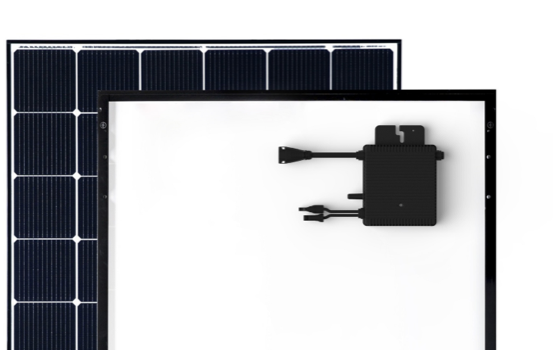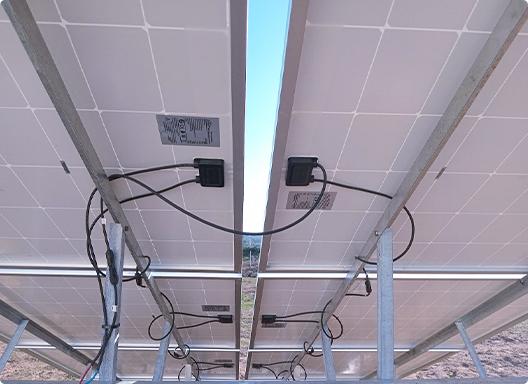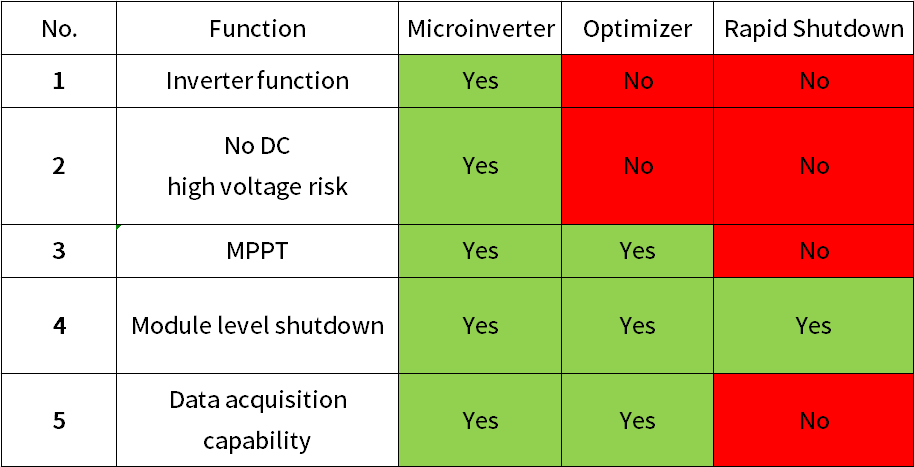Is Solar Rapid Shutdown Necessary?
Functionality comparison
Micro-inverters
Micro-inverters are capable of performing maximum power point tracking (MPPT) for each solar panel independently and inverting DC power into AC power for grid connection. The highlight of this device is its ability to provide independent MPPT for each module, ensuring that even if part of the module is affected by shadow shading or ash buildup, it will not affect the overall system's power generation efficiency.
The micro-inverter also has the ability to optimize system safety by reducing the risk of fire caused by high DC voltage.

Optimizer
As a power optimization device, it keeps the solar panels in optimal operating condition at all times by predicting and adjusting the current and voltage. The optimizer is also characterized by a fast shutdown function, which cuts off the connections between the modules in case of emergency and significantly reduces the safety risk of the plant.

Rapid Shutdown
Shutdowns specialize in providing module-level fast shutdown functionality to quickly disconnect solar panels from each other in an emergency, eliminating DC high voltage and ensuring the safety of the PV system.

Safety Comparison
When comparing a ‘micro-inverter’ with a ‘string inverter + optimizer/shutdown’ solution, one significant difference is the series and parallel connection of the currents in the system.
The micro-inverter solution effectively avoids the safety hazard of DC high voltage because of its fully parallel structure. While the string inverter + optimizer/shutdown solution can reduce the safety risk to a certain extent, it may still cause arcing under DC high voltage, increasing the risk of fire.
However, optimizers and turn-offs are more advantageous in the event of a fire. Unlike micro-inverters, optimizers and turn-offs can quickly shut down the voltage to each solar panel, allowing firefighters to get to the scene in the first place and minimizing damage.

Cost-effective Comparison
Rapid Shutdown: relatively low price, the main function is to realize rapid shutdown at the module level, eliminating the DC high voltage existing in the PV system array, reducing the risk of electric shock and solving the risk of rescue.
Optimizer: Moderately priced, in addition to the module-level shutdown function, it also predicts and adjusts current and voltage to keep the PV module always in the best working condition, with certain power generation efficiency optimization function.
Micro-inverter: Higher price, but can independently perform maximum power point tracking for each PV module, and invert DC into AC for grid connection, ensuring that even if part of the module is affected by shadow blocking or ash accumulation, it will not affect the power generation efficiency of the overall system, and at the same time, it has the ability to optimize the system safety and reduce the risk of fires triggered by the high voltage of DC power..
In Summary
Micro-inverters, optimizers and shutdowns have their own merits and are suitable for different application scenarios. Choosing the right technical solution needs to be based on the specific needs of the PV power plant, including factors such as safety, system efficiency and cost. With the continuous progress of PV technology, it is believed that these component-level power electronics will play a greater role in the future.